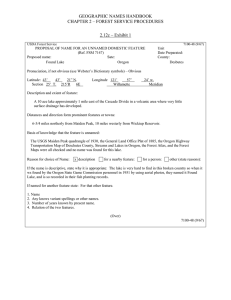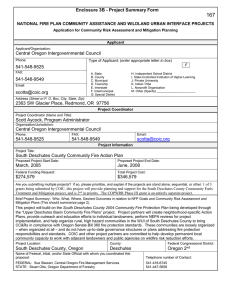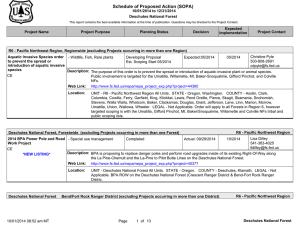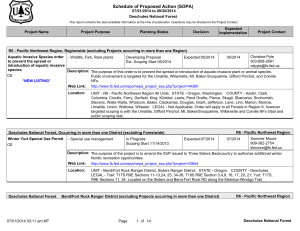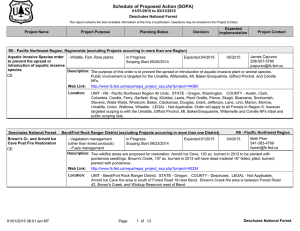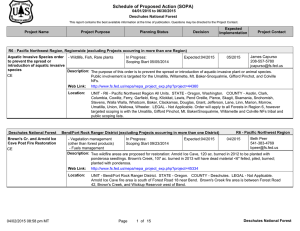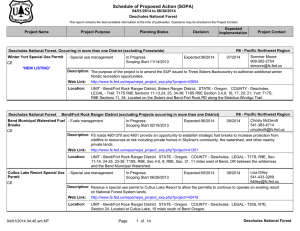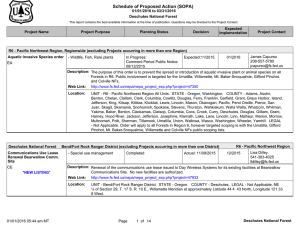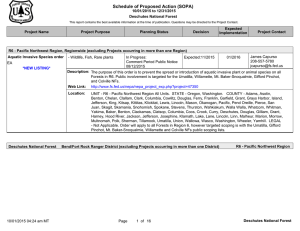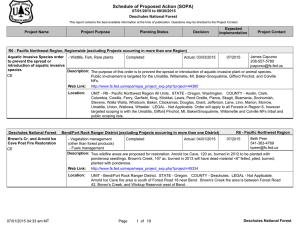Deschutes National Forest Forest Facts
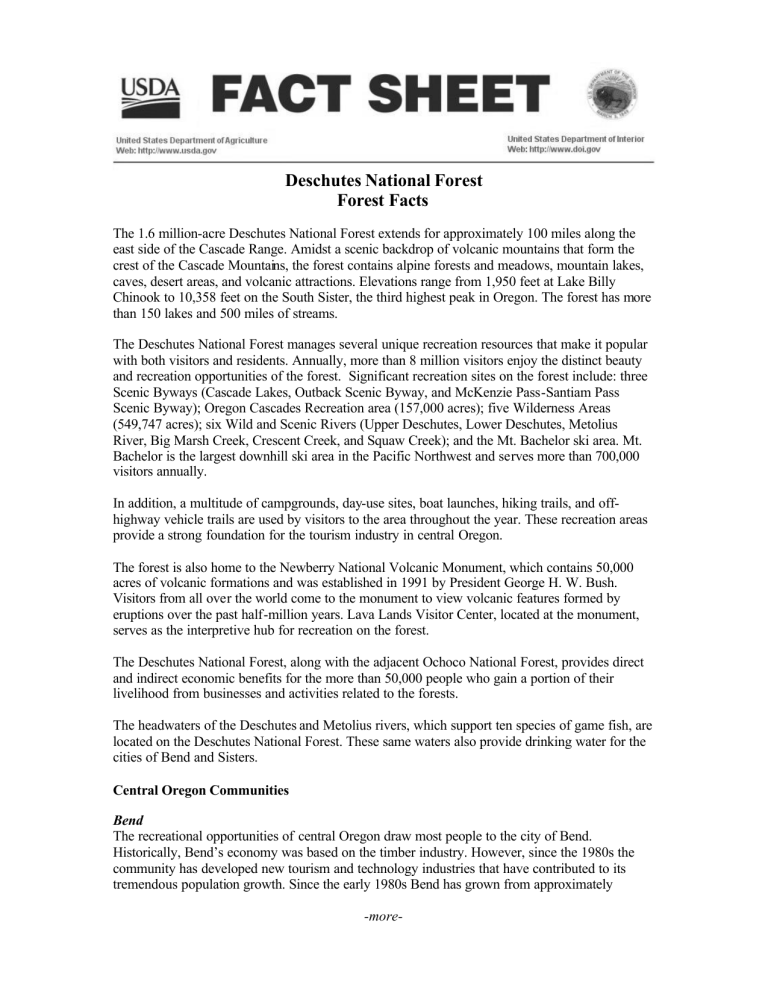
Deschutes National Forest
Forest Facts
The 1.6 million-acre Deschutes National Forest extends for approximately 100 miles along the east side of the Cascade Range. Amidst a scenic backdrop of volcanic mountains that form the crest of the Cascade Mountains, the forest contains alpine forests and meadows, mountain lakes, caves, desert areas, and volcanic attractions. Elevations range from 1,950 feet at Lake Billy
Chinook to 10,358 feet on the South Sister, the third highest peak in Oregon. The forest has more than 150 lakes and 500 miles of streams.
The Deschutes National Forest manages several unique recreation resources that make it popular with both visitors and residents. Annually, more than 8 million visitors enjoy the distinct beauty and recreation opportunities of the forest. Significant recreation sites on the forest include: three
Scenic Byways (Cascade Lakes, Outback Scenic Byway, and McKenzie Pass-Santiam Pass
Scenic Byway); Oregon Cascades Recreation area (157,000 acres); five Wilderness Areas
(549,747 acres); six Wild and Scenic Rivers (Upper Deschutes, Lower Deschutes, Metolius
River, Big Marsh Creek, Crescent Creek, and Squaw Creek); and the Mt. Bachelor ski area. Mt.
Bachelor is the largest downhill ski area in the Pacific Northwest and serves more than 700,000 visitors annually.
In addition, a multitude of campgrounds, day-use sites, boat launches, hiking trails, and offhighway vehicle trails are used by visitors to the area throughout the year. These recreation areas provide a strong foundation for the tourism industry in central Oregon.
The forest is also home to the Newberry National Volcanic Monument, which contains 50,000 acres of volcanic formations and was established in 1991 by President George H. W. Bush.
Visitors from all over the world come to the monument to view volcanic features formed by eruptions over the past half-million years. Lava Lands Visitor Center, located at the monument, serves as the interpretive hub for recreation on the forest.
The Deschutes National Forest, along with the adjacent Ochoco National Forest, provides direct and indirect economic benefits for the more than 50,000 people who gain a portion of their livelihood from businesses and activities related to the forests.
The headwaters of the Deschutes and Metolius rivers, which support ten species of game fish, are located on the Deschutes National Forest. These same waters also provide drinking water for the cities of Bend and Sisters.
Central Oregon Communities
Bend
The recreational opportunities of central Oregon draw most people to the city of Bend.
Historically, Bend’s economy was based on the timber industry. However, since the 1980s the community has developed new tourism and technology industries that have contributed to its tremendous population growth. Since the early 1980s Bend has grown from approximately
-more-
18,000 people to more than 57,000 people, making it the largest city in central Oregon. Bend is bounded on its east by the high desert vegetation of junipers, sagebrush, and bitterbrush. On its east are the Ponderosa pine forests of the Cascade Mountains.
Sisters
Sisters is right out of the Old West, from its 1880s turn-of-the-century storefronts to its authentic annual western rodeos and barbeques. Approximately 1,000 call the city of Sisters home.
However, the outlying neighborhoods, acreages, and resorts have an additional 9,000 people living within a five mile -radius. Towering Ponderosa pines, grassy valleys, and the closeness of
Cascade Mountain peaks makes it an aesthetic wonder for visitors while numerous community festivals and events gives it the charm its residents treasure.
Camp Sherman
Located in the picturesque Metolius Basin, Camp Sherman began as a rest stop for wheat farmers in the early 1900s. Social activities have always been important to the isolated community of
Camp Sherman. Built in 1949, the Camp Sherman Community Hall is the center of Camp
Sherman’s social activity hosting events such as weddings, potlucks, and community meetings.
The Camp Sherman General Store is a well-known and favorite attraction of the Metolius Basin, offering fly fishing equipment and fine food. Most residents of the area are summer vacationers, retired residents, or local workers.
August 2003
#
